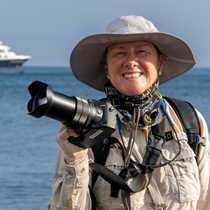Dorado River, Pacaya-Samiria National Reserve
The Pacaya–Samiria National Reserve is one of the largest protected areas in Peru with an area of more than 2 million hectares (7,700 ml², 20,800 km² or the equivalent of the state of New Jersey!). It is also the largest protected seasonal flooded forest in South America. This Peruvian reserve is made up of three hydrographical basins: the Samiria River drainage, the Pacaya River drainage and the Yanayacu-Pucate drainage.
Two big rivers delimit the borders of the reserve: the Marañon River to the north and the Ucayali River in the South. At the junction of these two mighty rivers, the easternmost corner of the reserve, the Amazon River is finally born and baptized, and as she grows with each additional tributary, makes hers journey (starting at 340 feet / 04 meters above sea level) for another 1,926 miles (3,100kms) to the Atlantic Ocean.
As everyone has heard, the Amazon rainforest is renowned for its biodiversity. Just within the Reserve, research so far has found that the reserve harbors over 500 species of birds (which makes up almost 64% of the total birds recorded for Peru and includes five of the eight species of macaw and the primitive-looking hoatzin), 132 species of mammals (this includes the pink and gray river dolphins, several monkey species and giant river otters), 240 species of reptiles (including the giant anaconda and black caiman), 58 species of amphibians, 259 species of fish (includes the famous giant “paiche” and armored catfish) and well over 1,200 species of plants with more being described every day, many of medicinal significance.
We saw just a fraction of this today, and even so, it is almost overwhelming. An early pre-breakfast outing and our later post-breakfast expedition up Belludo Cano added greatly to our wildlife list: Monk saki monkeys, pink river dolphins, squirrel monkeys, blue and yellow macaws, crimson tanagers, great black-hawk, all kinds of kingfishers. Bromeliads were flowering, some trees are seeding, the kapok red seed pods prominent (one tree had several eaten out by parakeets for both food and a very comfortable nesting place).
One encounter with a small boat manned by a fisherman allowed a close look at the famous armoured catfish of the Amazon. It is practically a staple of all who fish in the area, and as the river levels lower, the living quarters of the catfish in the banks are exposed in the form of numerous holes.
Another family was transporting a dugout up-river in a motorized vessel. Traffic can get busy in some of the smaller tributaries!
That afternoon we repositioned to the Dorado River and travelled even deeper into the Pacaya-Samiria National Reserve. Hoatzins, those seemingly primitive birds we found deep along one shore of lagoon. The horned screamers were making their booming and far-ranging calls from the tops of the canopy. Cocoi herons, black-collared hawks, and many others were spotted, and later in the dark, spectacled caimans and Great Potoos were found as well as fishing bats, the Big Dipper and the Southern Cross with attending Centauris.




